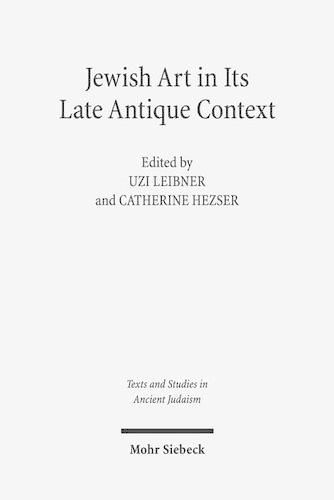Readings Newsletter
Become a Readings Member to make your shopping experience even easier.
Sign in or sign up for free!
You’re not far away from qualifying for FREE standard shipping within Australia
You’ve qualified for FREE standard shipping within Australia
The cart is loading…






The contributions to this volume examine the emergence of ancient Jewish art from the interdisciplinary perspective of scholars in Art and Archaeology, Ancient Judaism and Rabbinics, Patristics and Church History. They evaluate the manifold ways in which late antique and early Byzantine Jewish art was embedded in its Hellenistic and Roman cultural context by, at the same time, evincing specifically Jewish and local Near Eastern idiosyncrasies. Since the Graeco-Roman context was shared with early Christian art, some formal similarities are recognizable, whereas the meanings associated with the images would have differed. A study of the relationship between the literary sources (the Hebrew Bible, Jewish Hellenistic and rabbinic literature) and the artistic depictions is crucial for a proper understanding of ancient Jewish art. Similarly important are the artistic analogies appearing in Graeco-Roman and early Christian contexts. Of particular interest is the question why Jewish figurative art developed in the Land of Israel in late antiquity only: which political, social, economic, religious and cultural constellations may have led to the emergence of figurative art? How do these images relate to biblical commandments advocating aniconism and what would rabbis have made of them? Was Erwin Goodenough correct about a dichotomy between popular synagogue art and an aniconic rabbinic Judaism? The Jewish use of images with analogies in pagan (and sometimes also Christian) contexts is particularly striking: what led Jews to adopt images such as the zodiac and pagan mythological figures and scenes and how were they combined with images based on biblical narratives? The volume shows how an interdisciplinary approach leads to a better understanding not only of ancient Jewish, but of Graeco-Roman and Christian art as well.
$9.00 standard shipping within Australia
FREE standard shipping within Australia for orders over $100.00
Express & International shipping calculated at checkout
Stock availability can be subject to change without notice. We recommend calling the shop or contacting our online team to check availability of low stock items. Please see our Shopping Online page for more details.
The contributions to this volume examine the emergence of ancient Jewish art from the interdisciplinary perspective of scholars in Art and Archaeology, Ancient Judaism and Rabbinics, Patristics and Church History. They evaluate the manifold ways in which late antique and early Byzantine Jewish art was embedded in its Hellenistic and Roman cultural context by, at the same time, evincing specifically Jewish and local Near Eastern idiosyncrasies. Since the Graeco-Roman context was shared with early Christian art, some formal similarities are recognizable, whereas the meanings associated with the images would have differed. A study of the relationship between the literary sources (the Hebrew Bible, Jewish Hellenistic and rabbinic literature) and the artistic depictions is crucial for a proper understanding of ancient Jewish art. Similarly important are the artistic analogies appearing in Graeco-Roman and early Christian contexts. Of particular interest is the question why Jewish figurative art developed in the Land of Israel in late antiquity only: which political, social, economic, religious and cultural constellations may have led to the emergence of figurative art? How do these images relate to biblical commandments advocating aniconism and what would rabbis have made of them? Was Erwin Goodenough correct about a dichotomy between popular synagogue art and an aniconic rabbinic Judaism? The Jewish use of images with analogies in pagan (and sometimes also Christian) contexts is particularly striking: what led Jews to adopt images such as the zodiac and pagan mythological figures and scenes and how were they combined with images based on biblical narratives? The volume shows how an interdisciplinary approach leads to a better understanding not only of ancient Jewish, but of Graeco-Roman and Christian art as well.